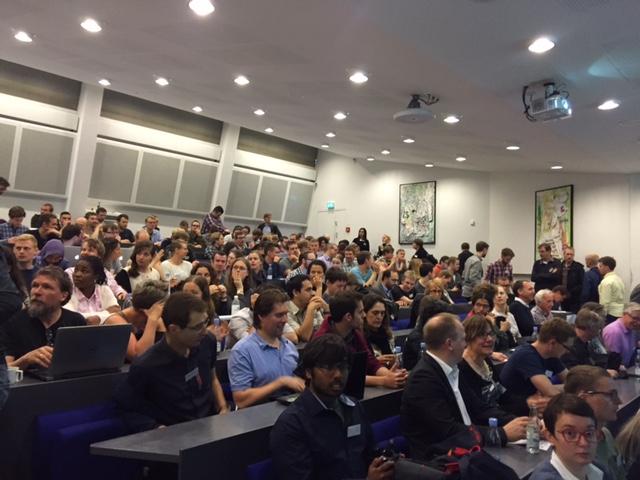Neutron and synchrotron science in the Danish academic spotlight

On the 26-27 May the 8th DanScatt Meeting and the 45th Danish Crystallographers Meeting took place at the Faculty of Health and Medical Sciences of the University of Copenhagen (KU).
The Danish Academic event has become an opportunity for scientists to present advancements in the fields of neutron and synchrotron science and to inform junior scientists about the research opportunities related to the neighbouring research facilities.
Making the best of ESS
The DanScatt meetings are funded by Danish Agency for Science, Technology and Innovation to support the Danish memberships in ESS, E-XFEL, ESRF and ILL, as well as strategic collaborations with PSI and MAX IV. This reflects the Danish strategy for Higher Education and Science to seize the research, innovation and business opportunities offered by ESS in the fields of materials and life science. ESS Director of Science, Andreas Schreyer, provided an overview of the status of the facility and of its state-of-the-art instruments.
Mogens Christensen from the University of Aarhus (Denmark) presented the work on the HEIMDAL instrument for ESS.
Fostering international collaboration
The two-day programme featured also presentations of ongoing projects from European facilities EMBL, E-XFEL, MAX IV. The Annual Meeting was opened with a lecture by Poul Nissen from Aarhus University, winner of the international Gregori Aminoff Prize in Crystallography 2016, awarded by the Royal Swedish Academy of Sciences.
The DanScatt meeting was preceded by the kick-off meeting of NNSP-networks, the project of the Nordic Neutron Science Program dedicated to the creation and support of scientific networks promoting new collaborations in neutron science. This initiative, led by Martin Sahlberg of Uppsala University, is part of a larger NordForsk effort to build a solid neutron scattering and X-ray community in the Nordic region.
BrightnESS contributes to this collective effort by supporting financially some of the initiatives and by catalyzing and sharing scientific knowledge and technical expertise from other regions.




 is funded by the European Union Framework Programme for Research and Innovation Horizon 2020, under grant agreement 676548.
is funded by the European Union Framework Programme for Research and Innovation Horizon 2020, under grant agreement 676548.